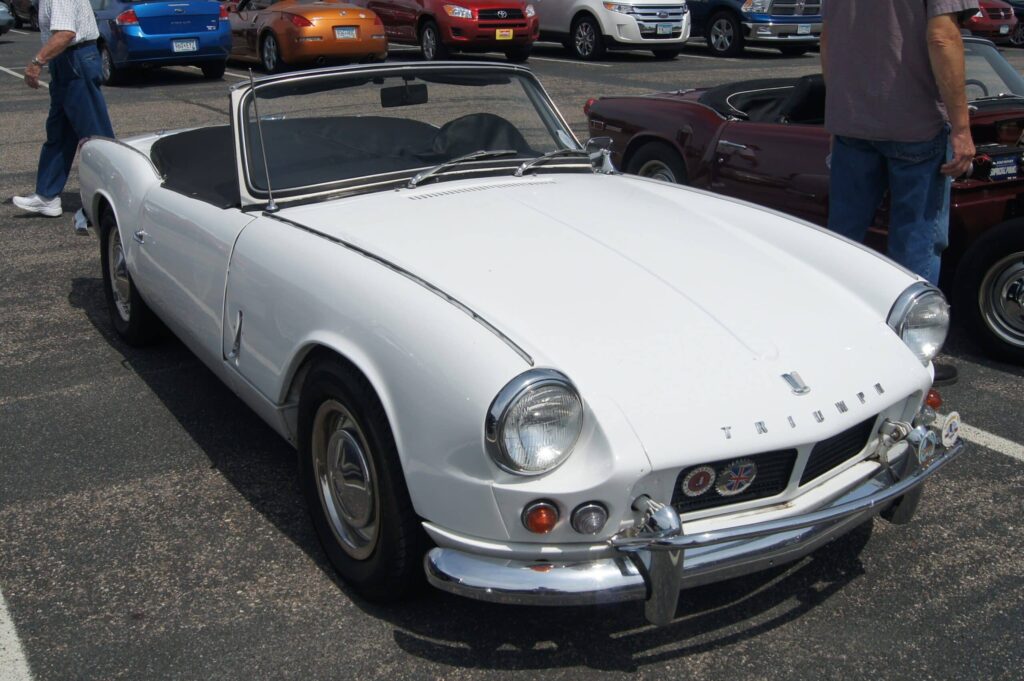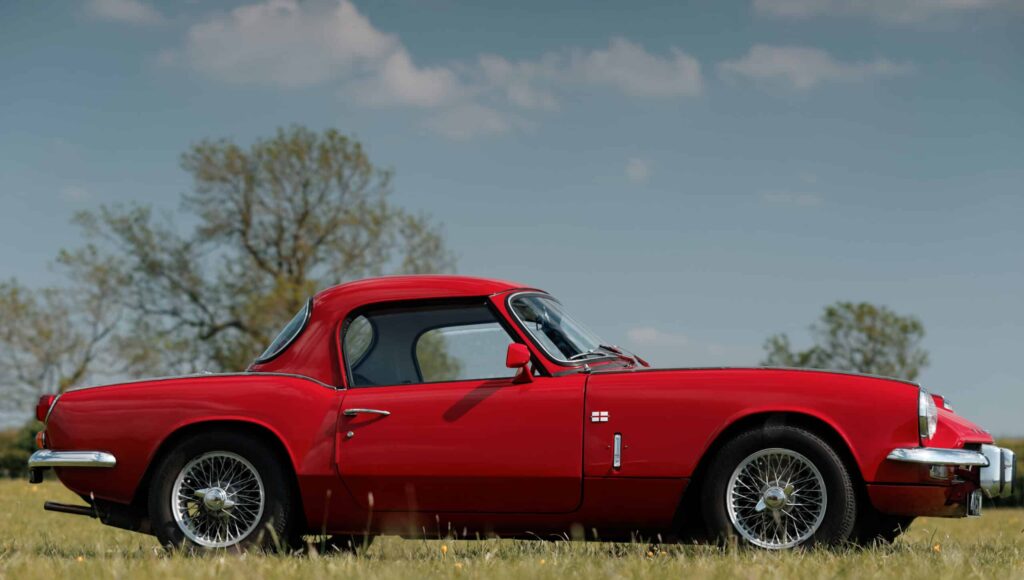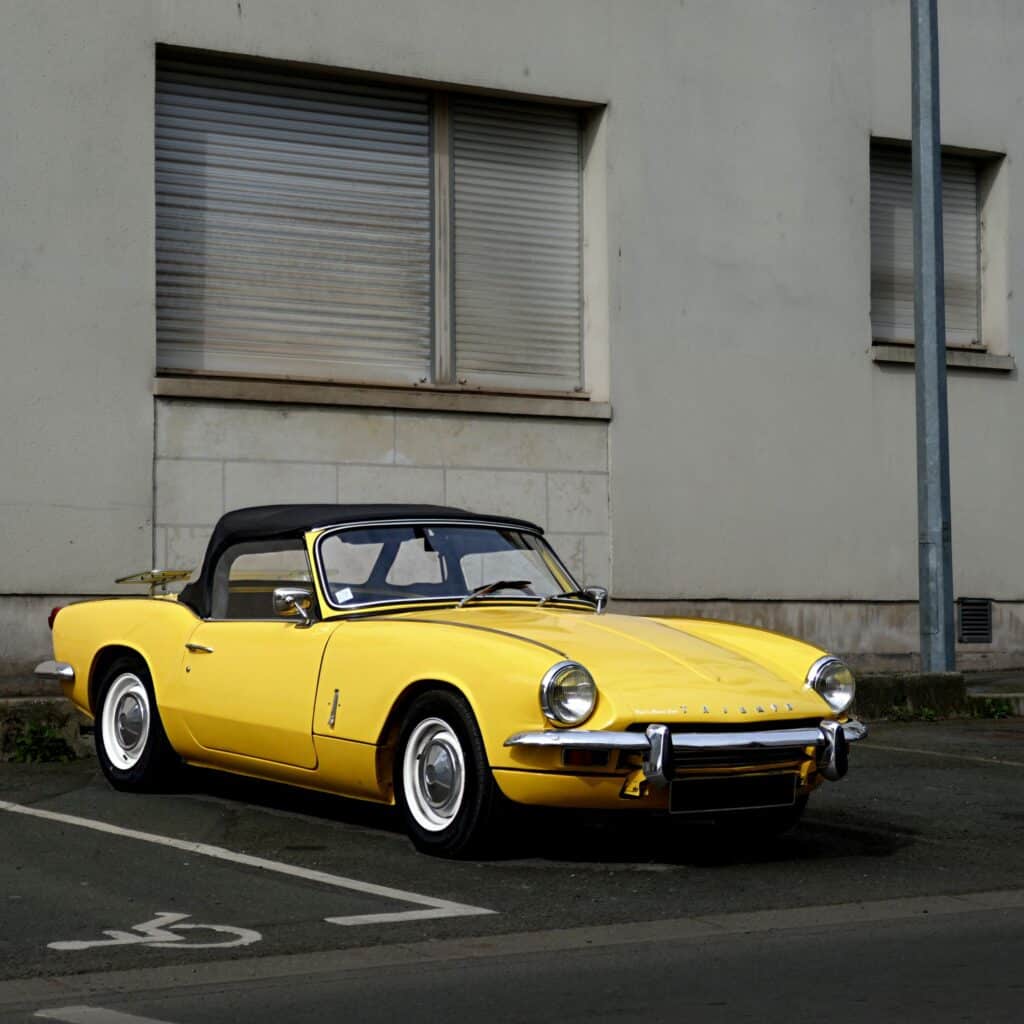Over the years, and especially in their primes, British automakers have given us even as many iconic and highly desirable cars. Still, some have been more popular than others, with Triumph Spitfire definitely one of them. This legendary roadster has always been a choice of those who valued driving experience above everything else. During its three-decades-long production run, it was manufactured in four distinctive generations, with every one of them having its charms. Because of that, singling out any of them as the most significant is almost impossible. So, in this article, we will cover all of the Triumph Spitfire generations and see how they impacted the automotive world. Furthermore, we’ll figure out which of these roadsters is most highly desirable by automotive enthusiasts and collectors today.
How the Triumph Spitfire got its name
Before diving into technical specifications and other details, let’s first explore the origins of the Spitfire name. In actuality, this iconic car owes its nameplate to another legend, which helped help reshape the world in 1940. This was the year when Germans, which had just conquered the whole of Europe, turned their attention to the United Kingdom. Their plan was to make this last remanence of freedom quit the war by intensively bombing bomb their cities and villages. And at first, it seemed as if the Luftwaffe would succeed in their doings, as they had total supremacy in the air. This was, at least, until the RIF sorted out their strategy and started fending off the invaders.
During these airborne struggles, one airplane, in particular, proved to be highly successful and stand out from the rest – the Supermarine Spitfire. This newly designed fighter plane could easily outmaneuver Messerschmitts and other German rivals, which consequently helped the British turn the war in their favor. Spitfires, capable as they may have been, surely didn’t single-handedly win the battle of Britain, as other airplanes had their share in this massive success. But in the eyes of the nation, it was the magnificent Spitfire who changed the game and ultimately saved the United Kingdom. Because of this, it gained a reputation of almost a national hero, whose successes have been idolized ever since. It was only natural for anything afterward that would bear the Spitfire name to have a vast weight on its shoulders. And in the early 60s, Triumph was determined they had the car that was up to the challenge. So here’s the story about the legendary Triumph Spitfire.
Spitfires’ almost ill-fated prototype
Another interesting fact about the Spitfire, the car, is that it almost didn’t go into production. The work on its prototype actually started in the late 50s, when Triumph was a stand-alone car manufacturer. This new roadster was going to be based on the successful Herald saloon, whose chassis and mechanics it would use. The most significant difference between the two would be the body, with the upcoming roadster designed by Italian designer Giovanni Michelotti. But the production had to be postponed due to Triumphs’ financial difficulties in the early 60s. This consequently led to it being bought by a much larger Leyland. The new owners, who discovered the nearly-abandoned prototype, were thrilled with its looks and rushed it into production.
The first generation Triumph Spitfire
When it was introduced in production in 1962, the Spitfire was almost identical to its several-years-older prototype. The only notable differences were a redesigned rear bumper, which was now separated into two segments, and a different grille. Apart from that, this car was just what it was initially intended to be – a small, open-roof car with two seats and an eye-catching appearance. Like its competitors, Triumph’s body lines were dominated by a long hood and a short, sloping trunk lid. But unlike most of them, it offered an easily-foldable tarpaulin roof or a hardtop as an option. A bit unusual, given the fact Spitfire was an affordable roadster, although this was more than welcomed by the buyers.

As the prototype, the first-generation Spitfire roadster shared its mechanical underpinnings with a more mass-produced Herald. This meant it had an elaborate front suspension and a responsive rack-and-pinion steering system, among other advanced features. But its trademark characteristic was at the back, where rear swing axles were used instead of a traditional live axle configuration. This setup became notorious for its application in the Chevrolet Corvair, which could oversteer ferociously or even roll over. But this tendency was not as prominent in a small and light car like the Spitfire. In reality, a skilled driver could control the oversteer when it happens and keep the car on edge, making the driving experience even more thrilling. The engine was a small, 1.2-liter pushrod 4-cylinder unit, which produced 63 horsepower. This may not seem as much, but the Spitfire was extremely light, weighing only 1500 pounds. With that and a well-balanced transmission, this roadster offered a competitive performance.
Triumph Spitfire’s second generation
Because the first Triumph was a hit among buyers and sold in great numbers, Triumph decided not to change it much when working on its successor. As a result, the new car, introduced in 1965, was similar to the one it replaced, with only a few cosmetical updates. This included a differently styled grille and more luxurious upholstery, among other details. There were no dramatic changes under the skin, either, with all mechanics being carried over from the outgoing model. Yet, the engine received a new carburetor and camshaft, which brought its output to 67 horsepower.

Third-generation Triumph Spitfire
In 1967, just two years after the second-gen model, its successor was released. But this time, the new car featured a noticeable redesign and various updated features. While the overall shape remained the same, the new car featured more aggressive body lines. This included much larger wheel arches and a revised front end, among other things. The interior was more luxurious, featuring a wood-plated instrument dash and a new steering wheel.

As with previous models, the third-gen Spitfire shared most of its mechanics with the Herald saloon. As a result, it used an updated 1.3-liter engine, which developed 75 horsepower. With 0-60 times in under 13 seconds and almost 100 mph top speed, the new Spitfire was more than competitive with its rivals. Still, in 1969, models for the US market were slightly detuned to meet the upcoming emission control regulations.
Triumph Spitfire’s fourth iteration
The fourth generation, which came to the market in 1970, Spitfire had almost an identical front end to its predecessor, as the designer focused on the rear end. Here, a more square body shape inspired by the new and highly successful Stag was employed. On the inside, the instrument cluster was moved from its traditional central-mounted position to in front of the driver. In addition, a redesigned hardtop, which was more sturdy, was available.
Most of the mechanics were quite similar to those in the outgoing model. By incorporating various safety features, the new Spitfire was slightly heavier, which did impact the performance. But the most significant change was done to the rear suspension, addressing the car’s somewhat unpredictable handling. By revising the infamous swing axle and giving it a negative camber, Triumphs engineers managed to make the new Spitfire easier to control.
The last of the Triumph Spitfire
The new and what would become the last Triumph Spitfire was introduced in late 1973. Driven by a good reception of the old cars, designers decided not to significantly restyle the outside and the interior. The only changes were made to the bumpers and headlights to meet the new safety standards. On the inside, creature comforts such as improved seats with headrests and electric screen washers became available.

The most significant update was under the hood, with the new car now having a 1.5-liter engine. The model, emphasizing the upgrade, was given a Spitfire 1500 nameplate. But despite the increase in the volume, the power output dropped to a modest 53 horsepower. This was due to the lower compression ratio, which was necessary to allow the usage of lower-octane fuel that was popular in the US. Still, the new engine had a lot of torque, which made the driving experience far more leisurely. In the end, the Spitfire 1500 remained in production until 1980.
Which is the most desirable Triumph Spitfire
In general, all Spitfire models are popular among automotive enthusiasts. It is, however, widely accepted that third-generation cars are the best among them, as they offer the most competitive performance and handling. The latest variant, Triumph Spitfire 1500, is also well-liked for its torquey engine and pleasurable driving experience. These cars are not that expensive, with the cheapest being priced at less than $10,000. On the other end of the scale, pristine models could reach prices well above $30,000.
Conclusion
Triumph Spitfire was a small British open-roof roadster manufactured between 1962 and 1980. During these years, more than 300,000 cars left the assembly line. Many of them were sold in the US, which ushered the way for other Triumphs models to this lucrative market. Most owners praised their Spitfires for robust reliability and exciting driving experience, making them one of the most desirable roadsters of their time.





